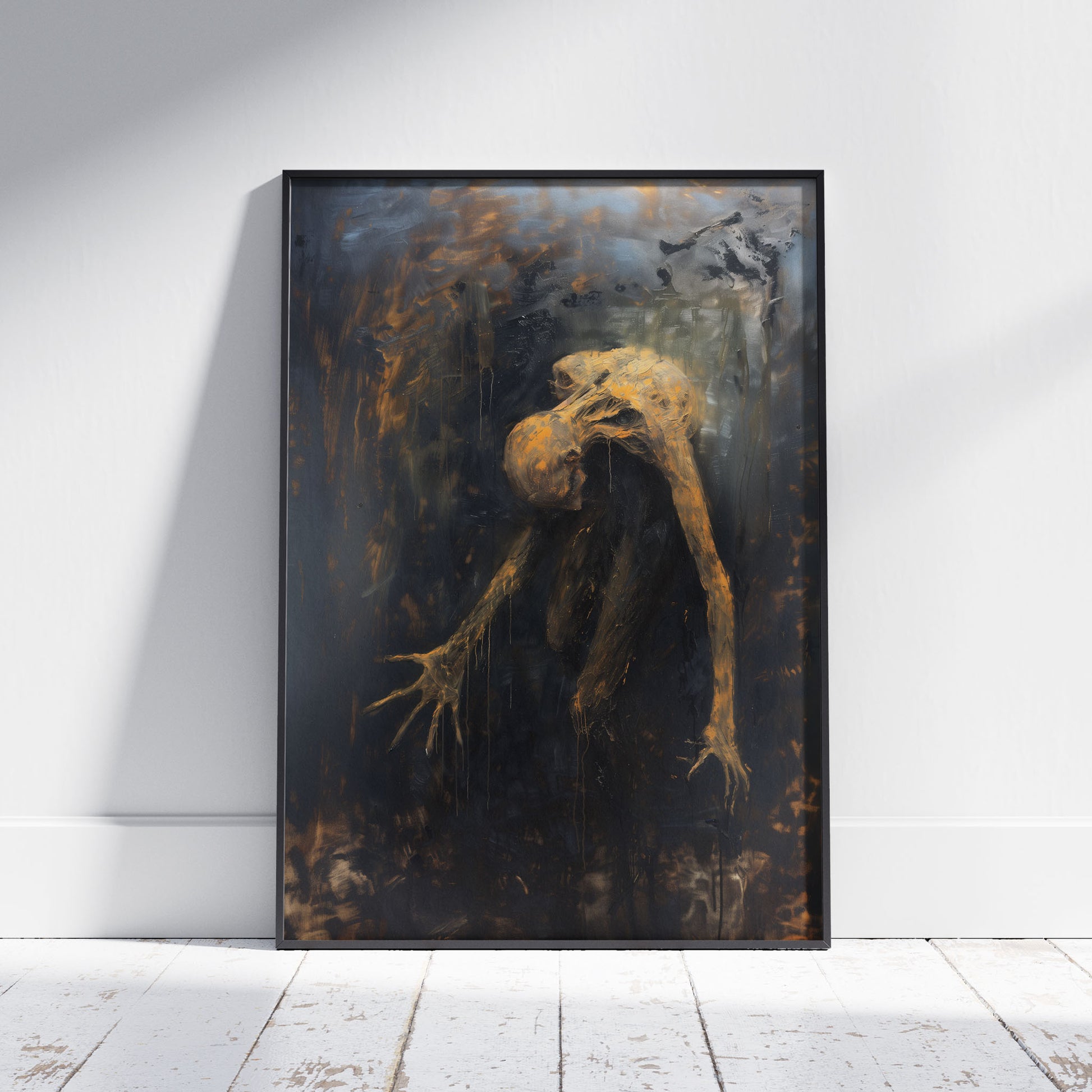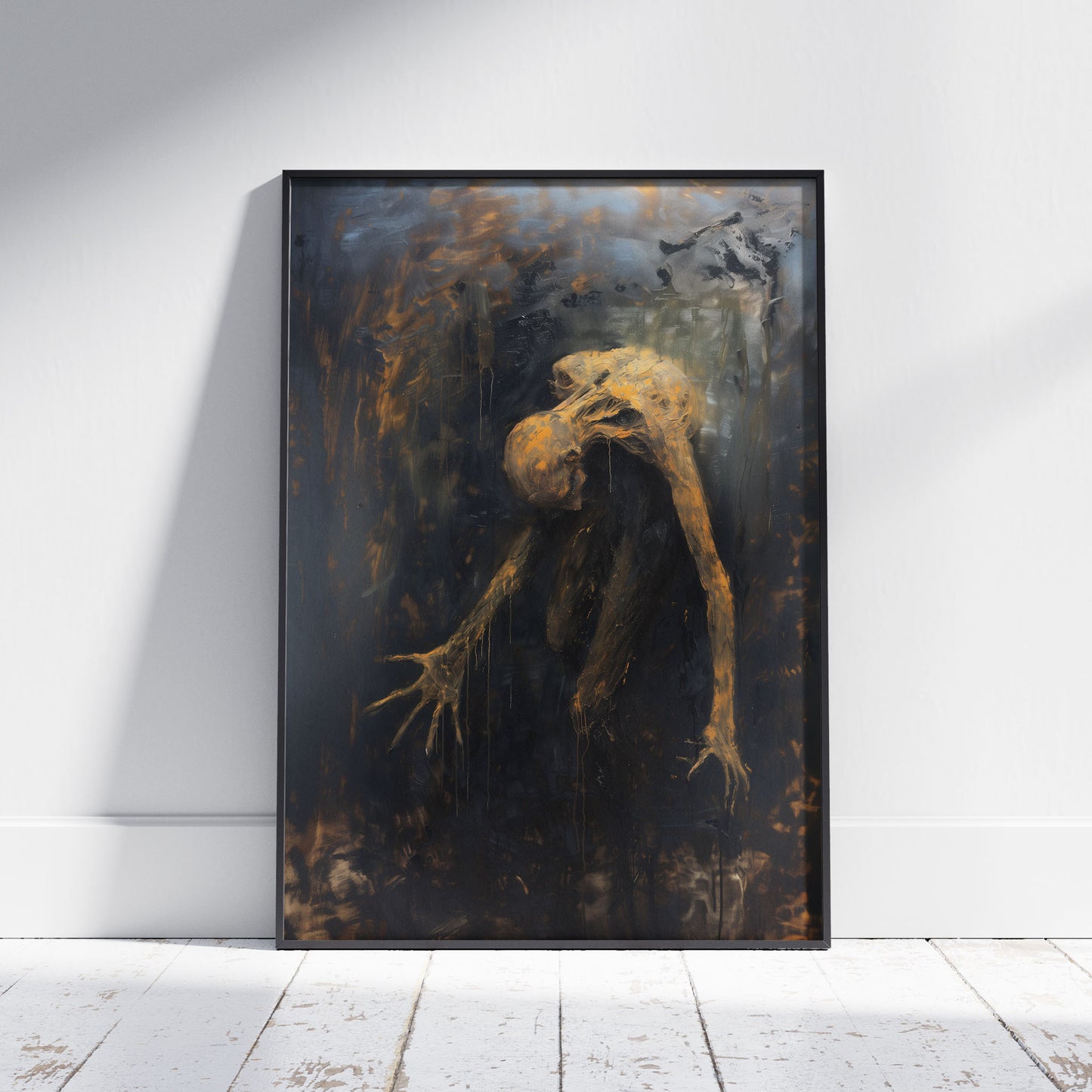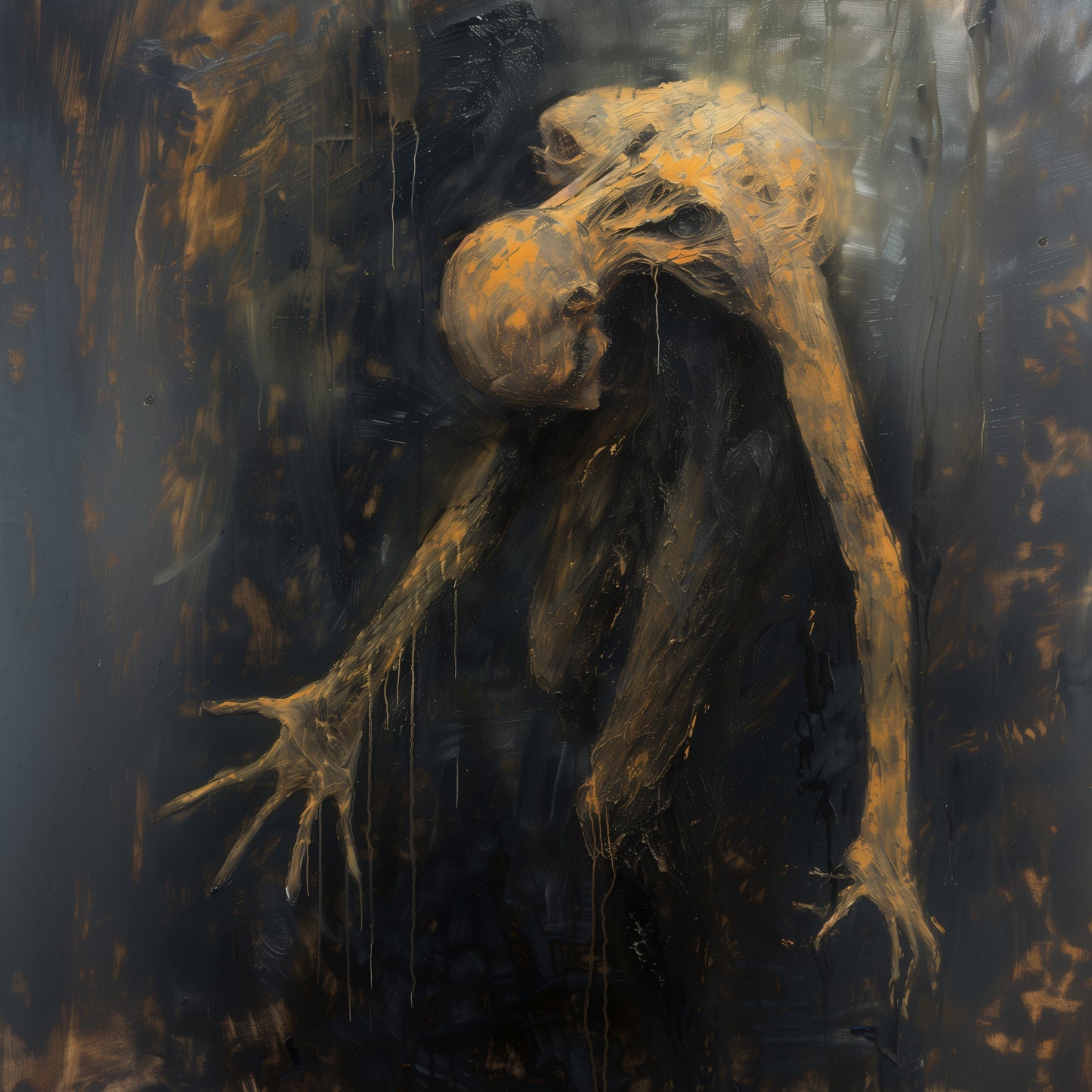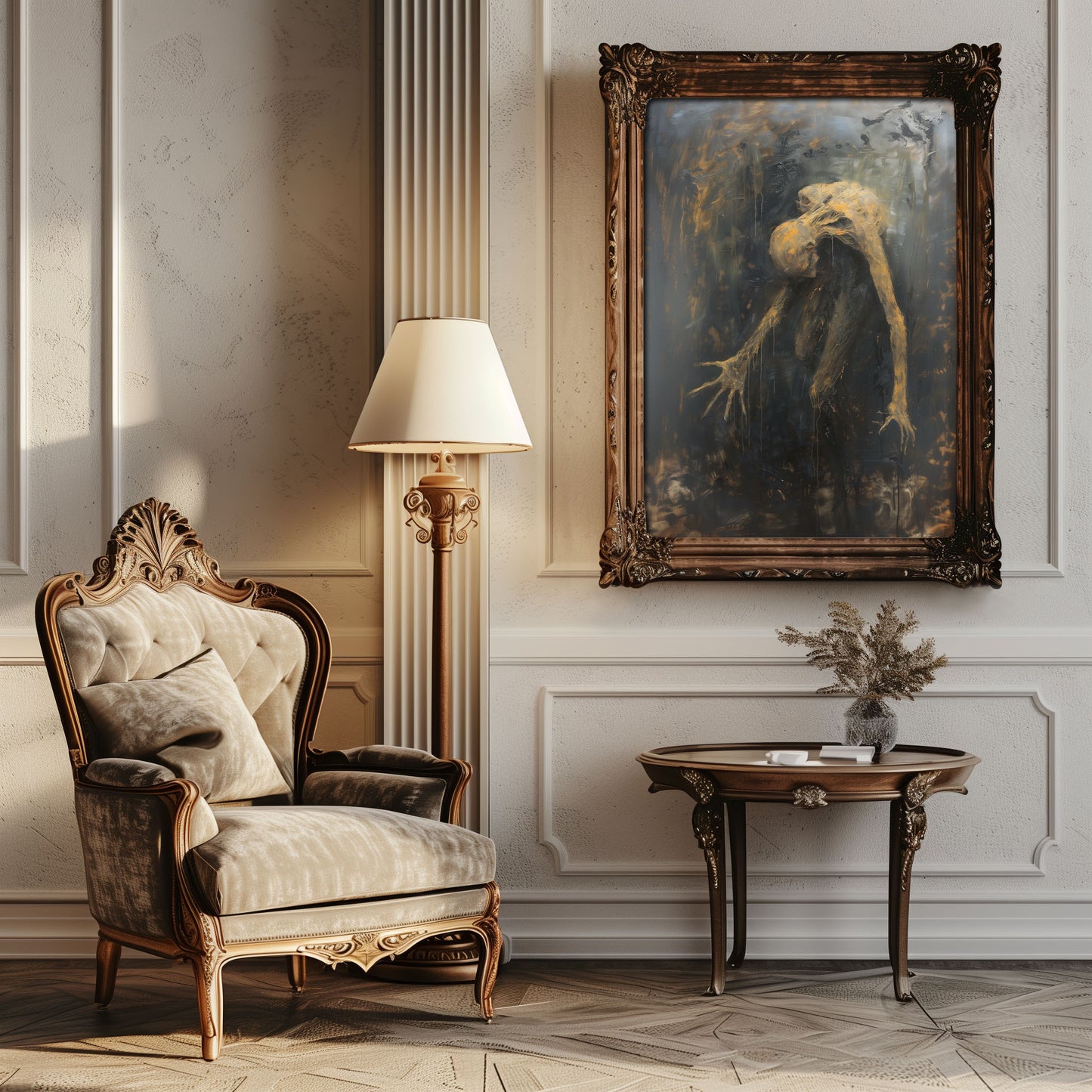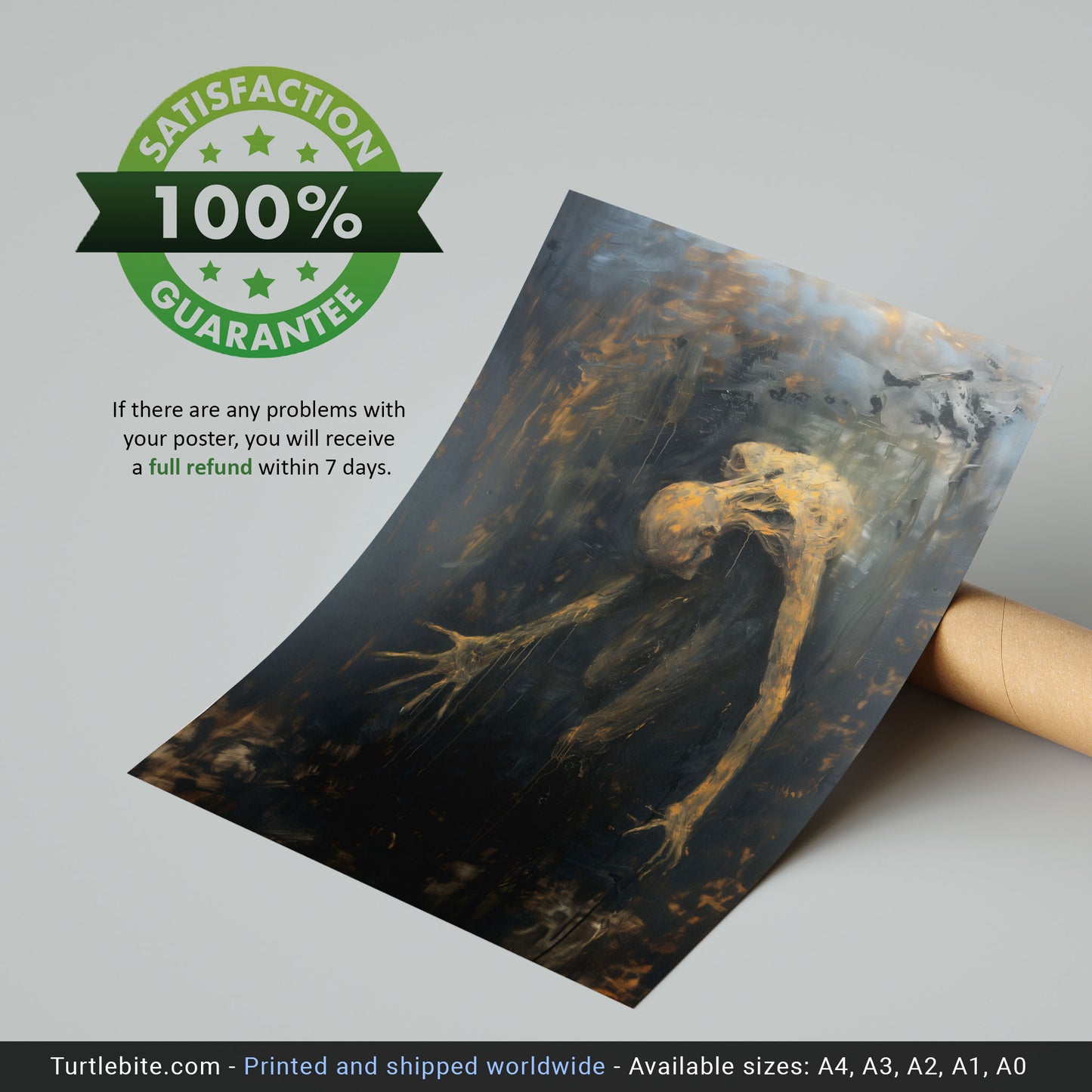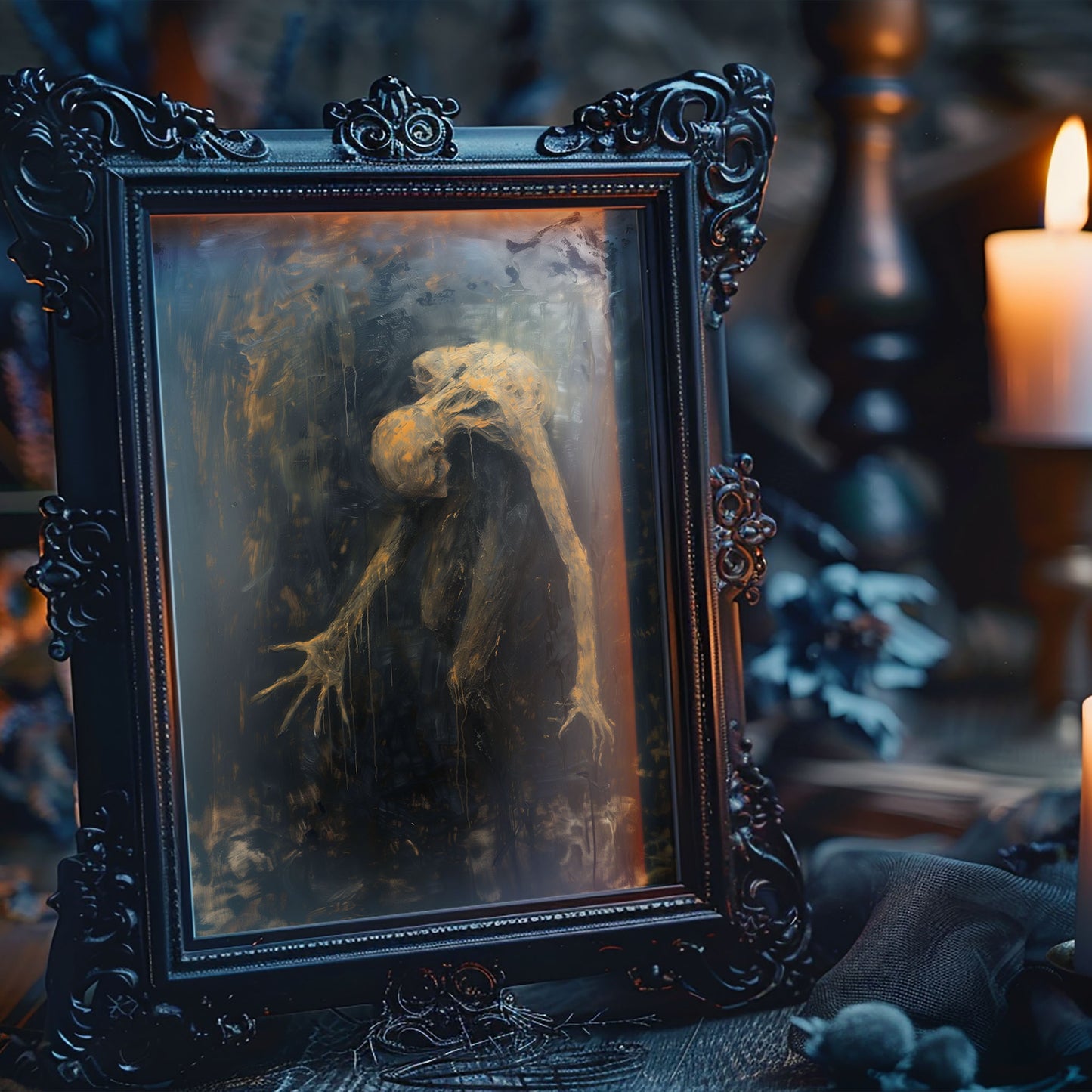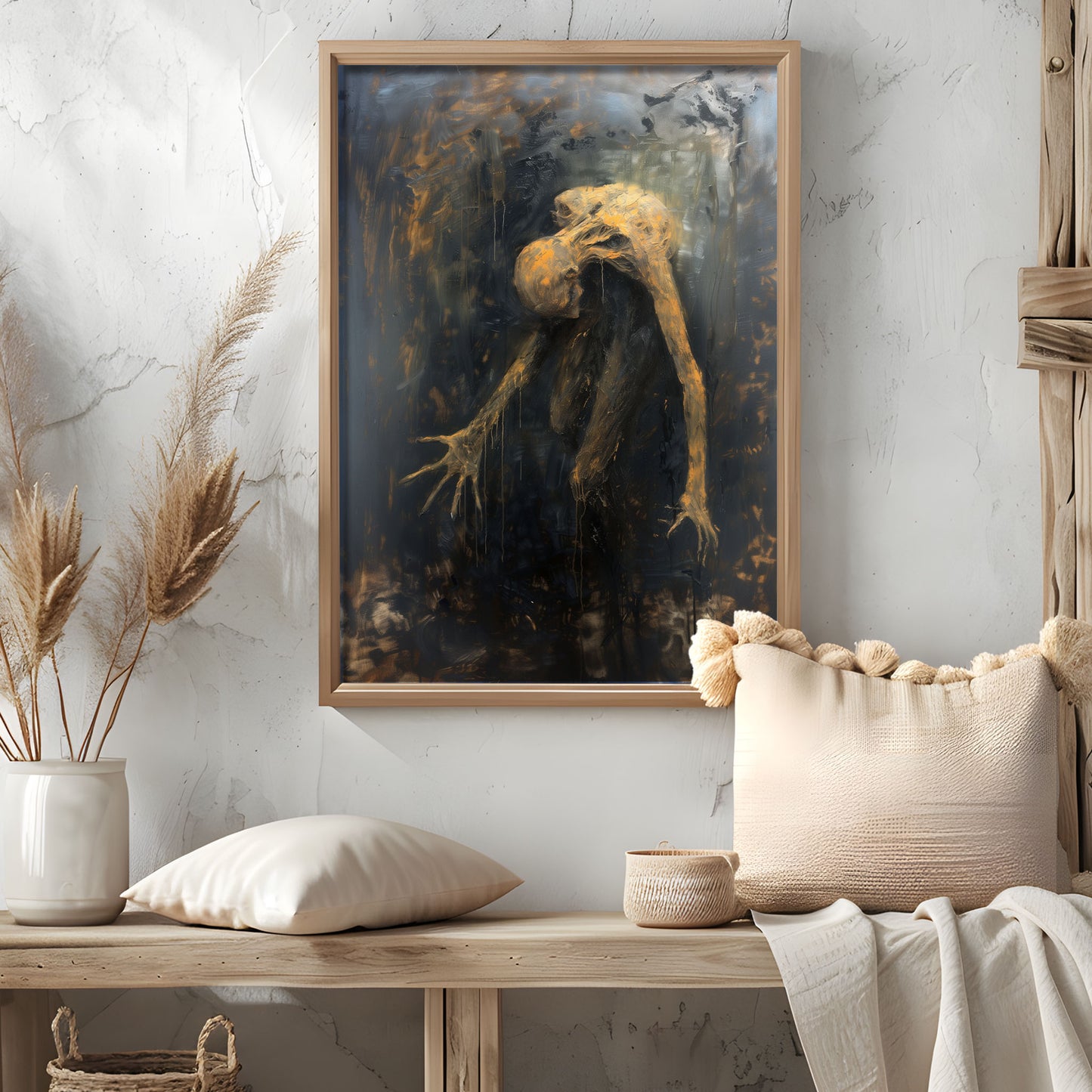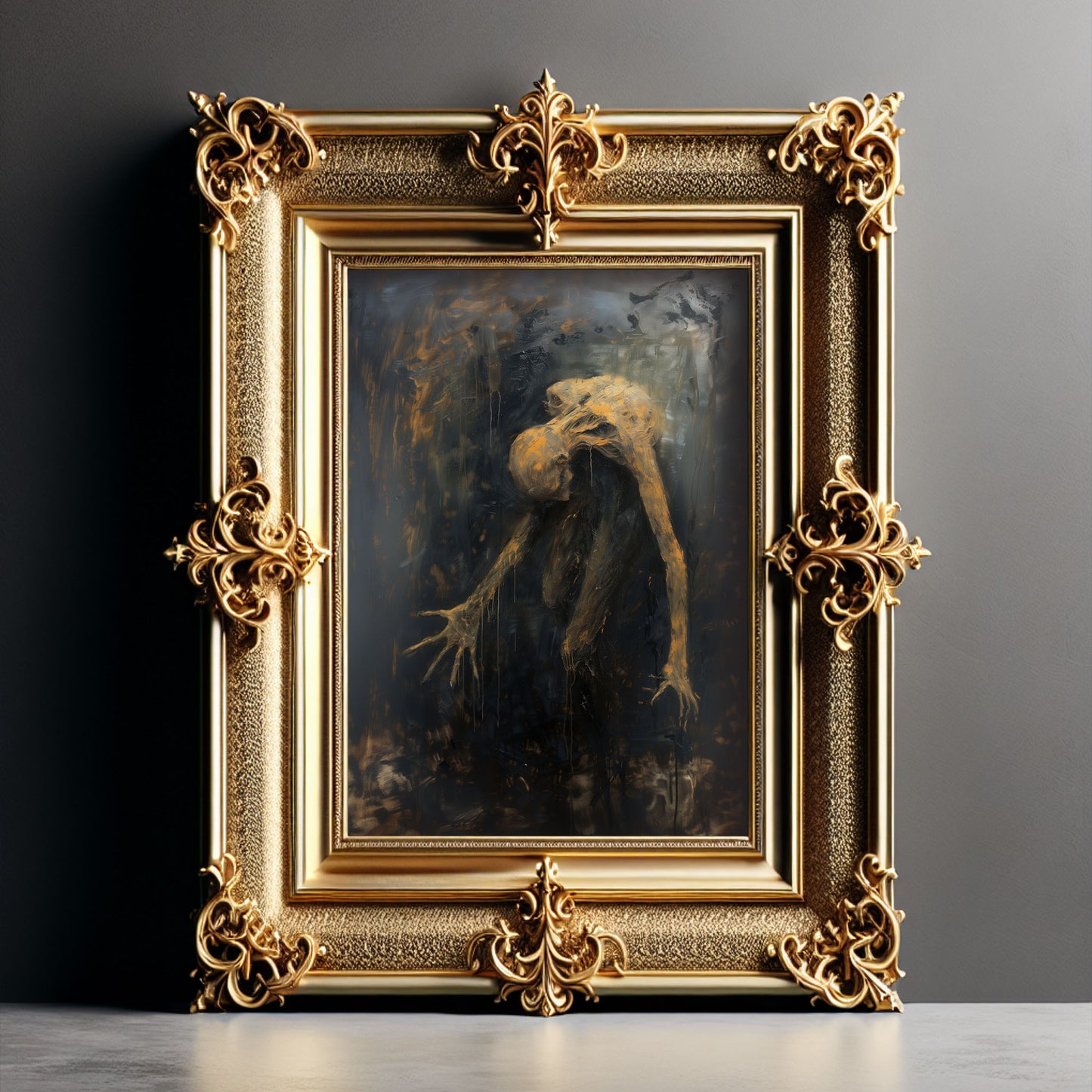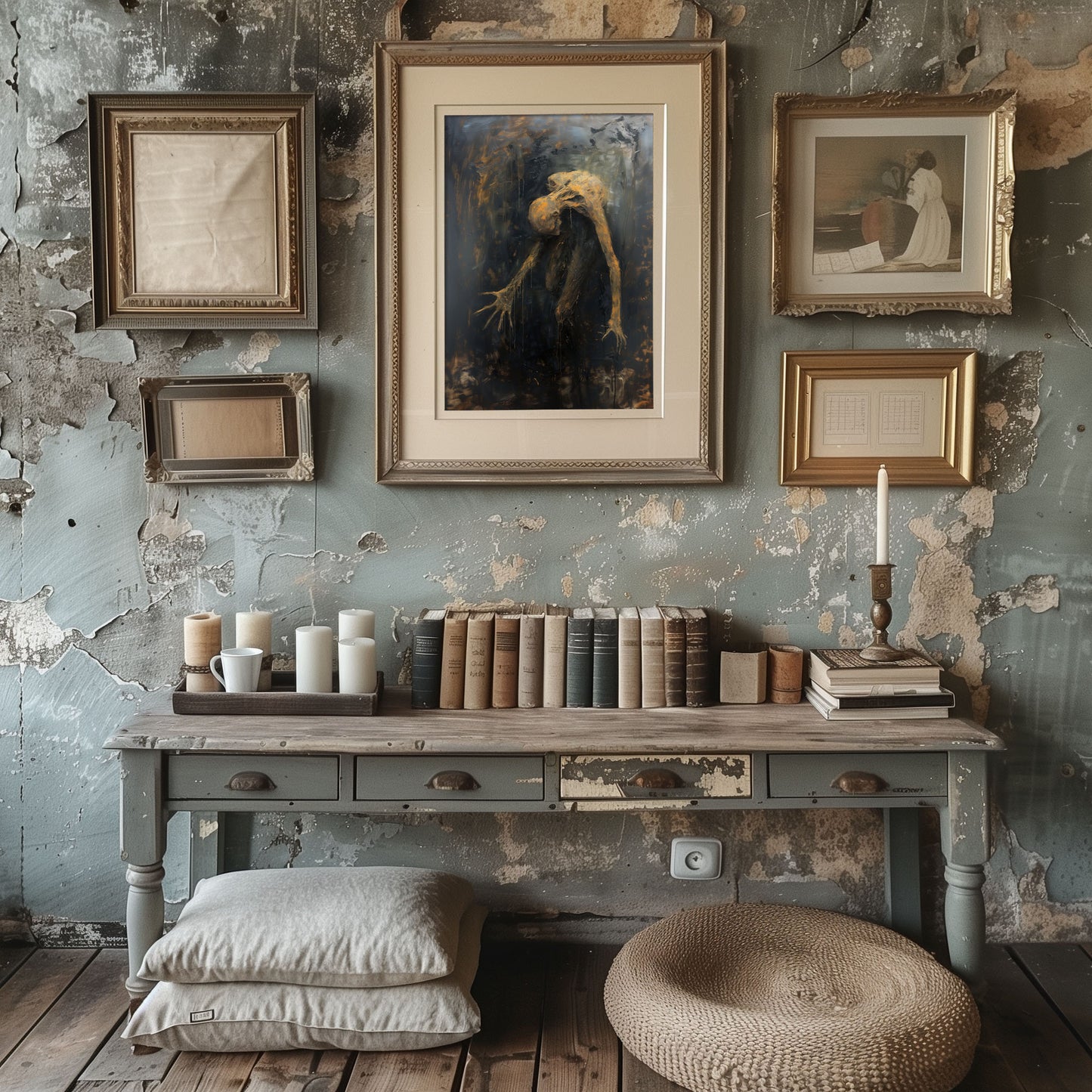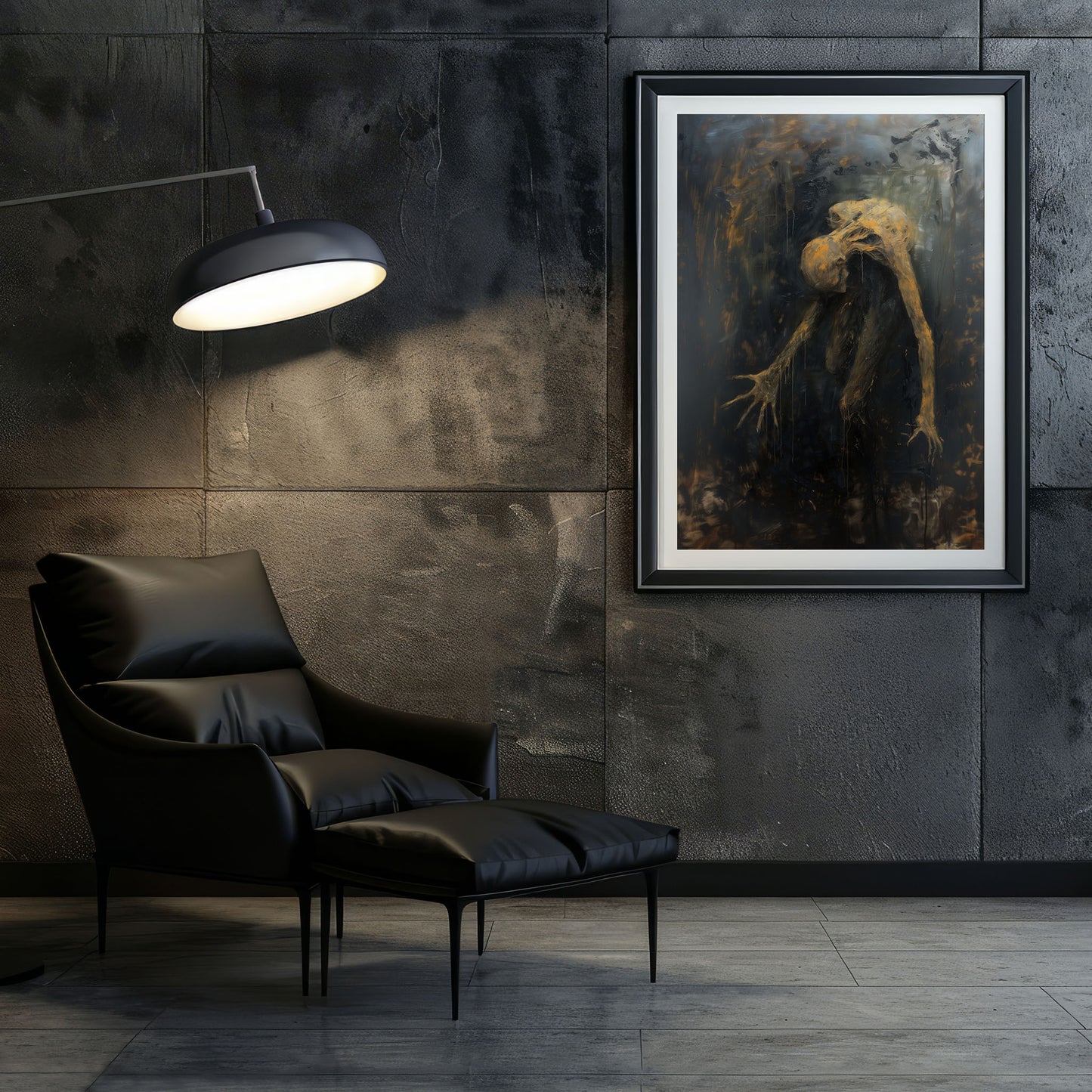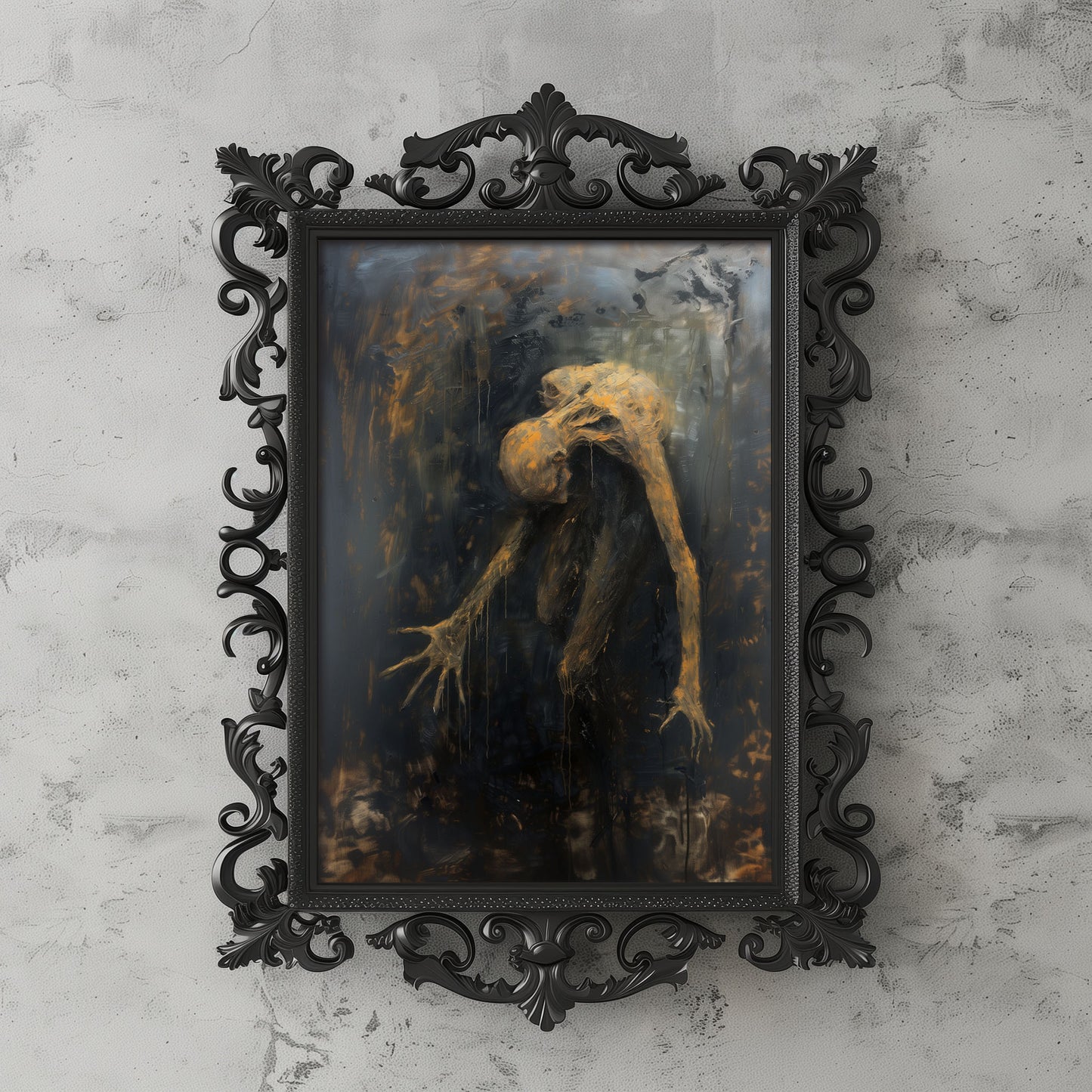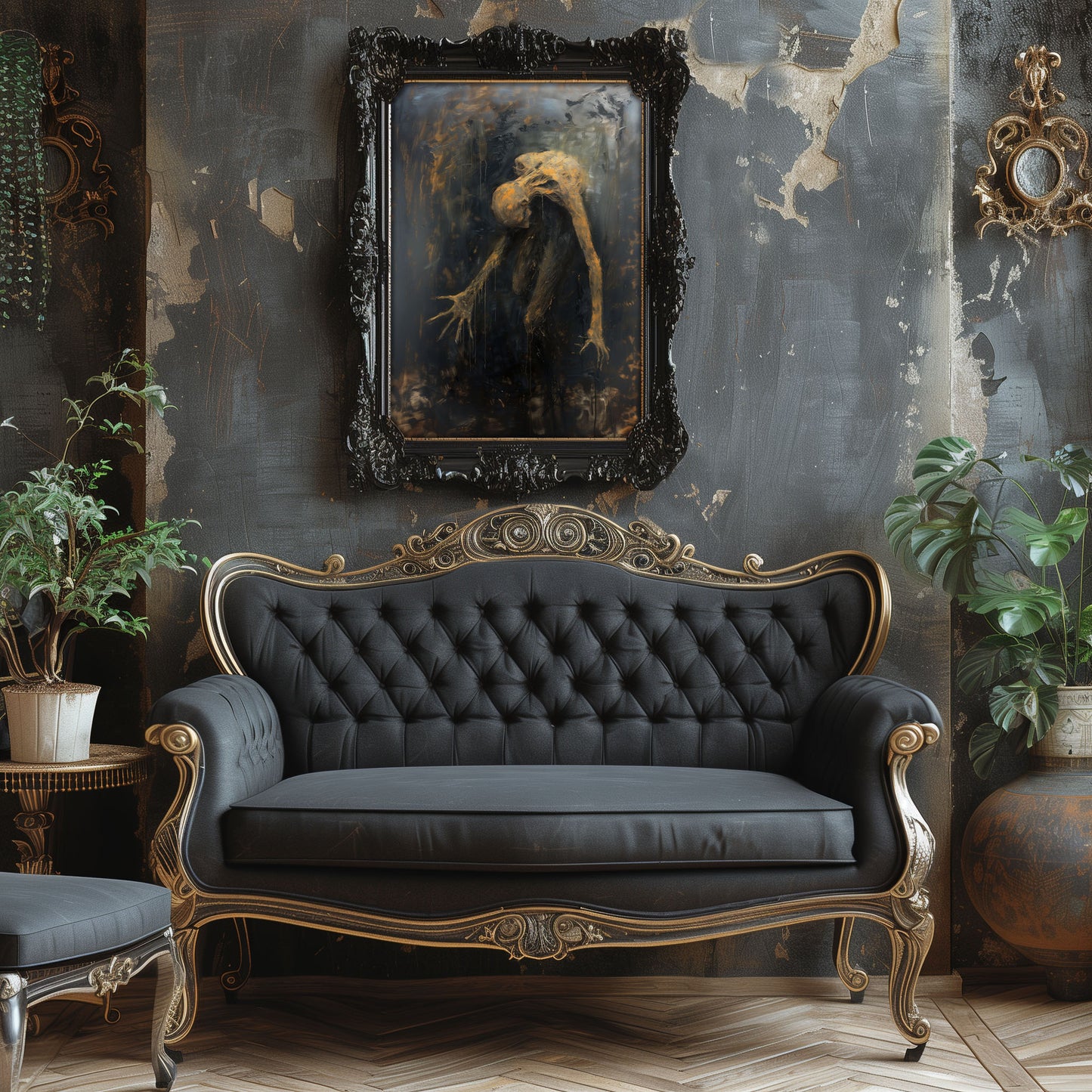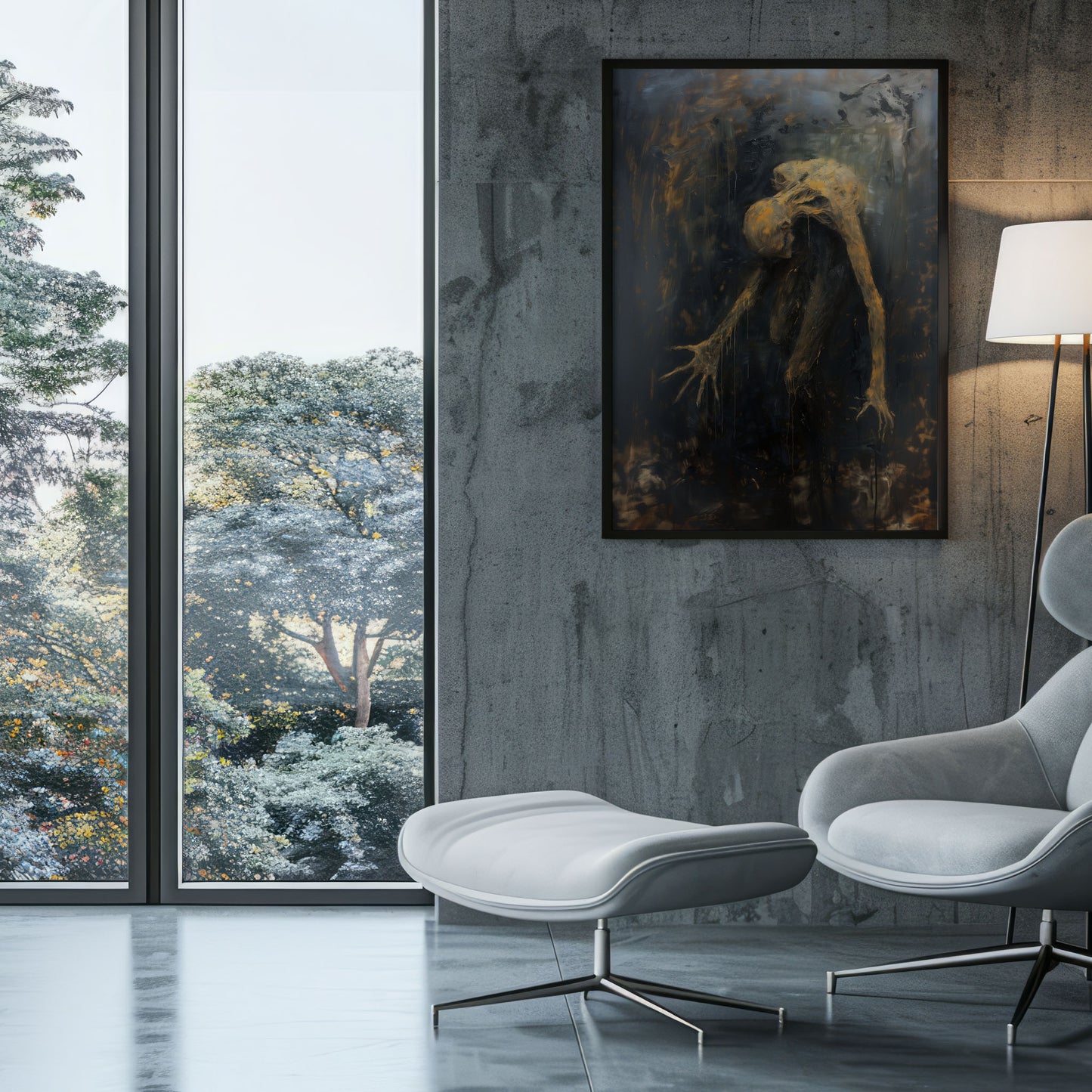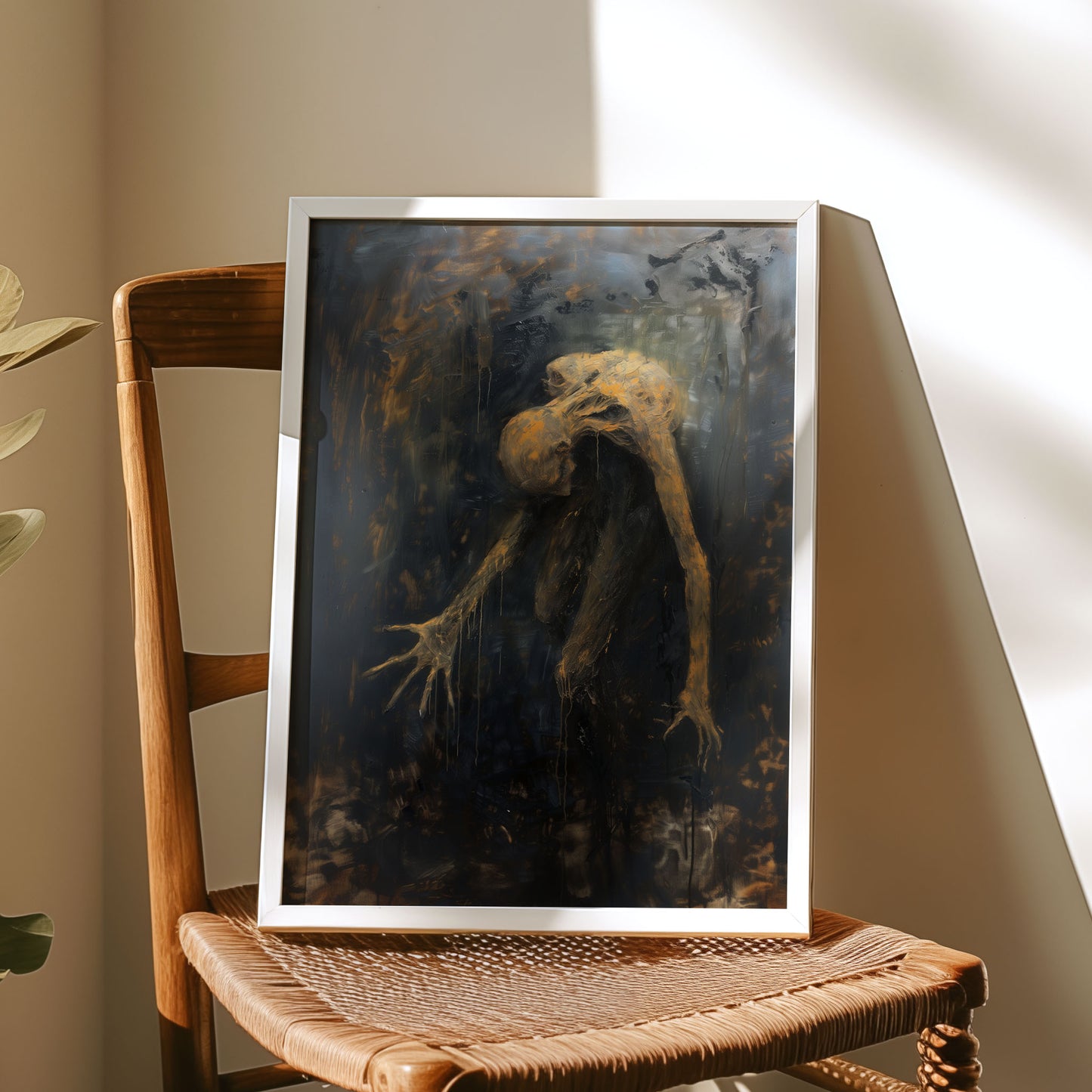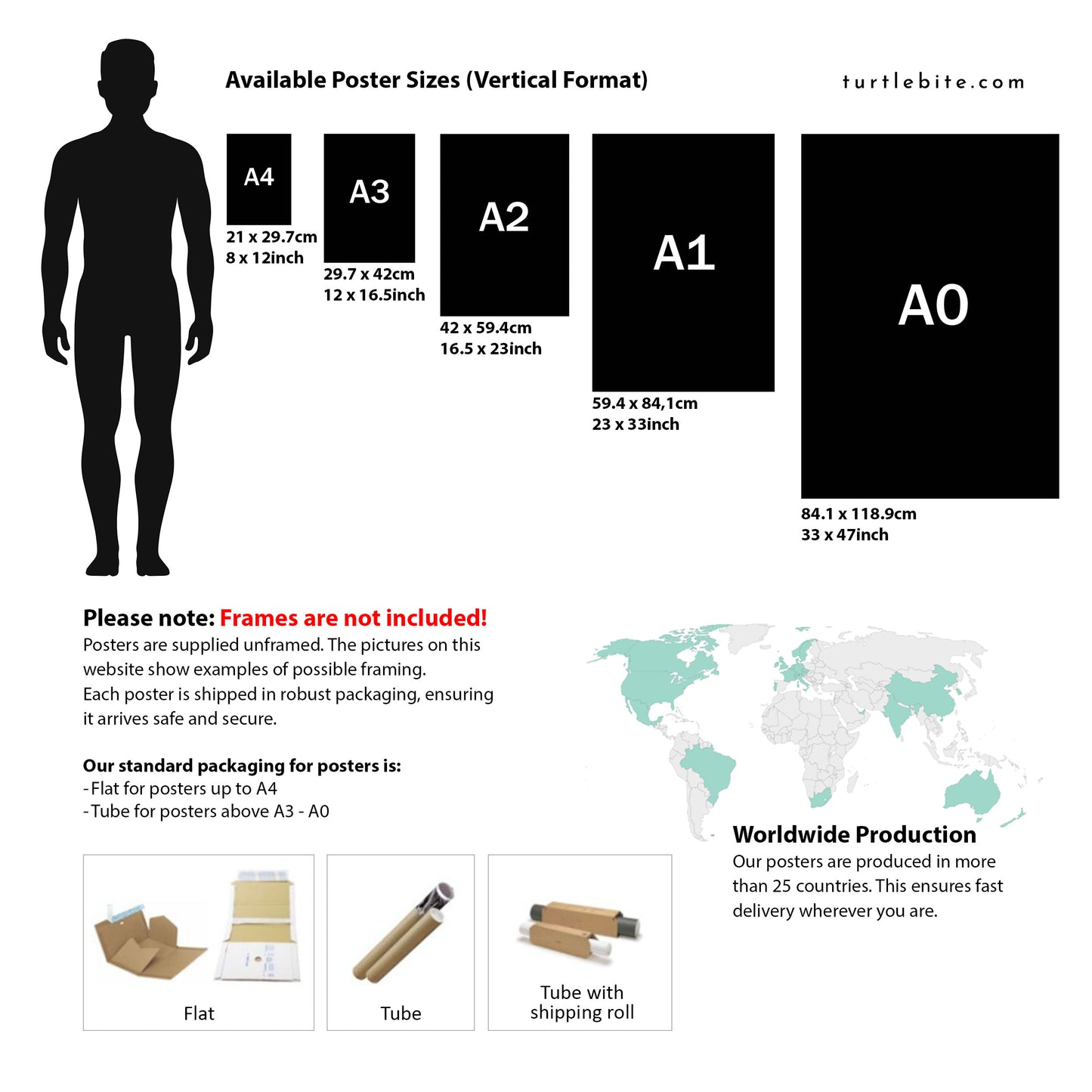
Dark Surrealism in Art: Peering into the Psyche Through a Distorted Oil Painting
ChristianShare
Introduction: The Unsettling Power of Dark Surrealism in Art
Art doesn’t always comfort. Sometimes, it disturbs, disrupts, and digs beneath the skin of the psyche. That’s the domain of dark surrealism in art - a genre where the inner self is exposed, raw and irrational, often deformed and reaching through layers of subconscious dread. Unlike traditional surrealism, which leans toward whimsical juxtapositions, dark surrealism is steeped in unease, trauma, and existential questioning.
The oil painting we’re examining is a powerful example of this aesthetic: a hunched, almost skeletal figure appears to melt into its dark environment, its elongated arms stretching unnaturally into the void. It's haunting, nightmarish, and emotionally raw - a surrealist descent into the subconscious mind. In this blog post, we’ll break down the visual, thematic, and psychological layers of this artwork to better understand how dark surrealism captures the quiet terror and strange beauty of the unknown
Composition: A Struggle Frozen in Paint
The central figure dominates the canvas with a twisted, hunched-over posture. The skeletal frame is exaggerated - spindly arms, a bald head, and pronounced fingers that drip like wax. It appears to be mid-fall or mid-reach, caught in a liminal space between motion and paralysis. The form is both human and not - its anatomy stretched and manipulated in a way that evokes discomfort.
This composition is inherently unbalanced, with the visual weight tilting downward and toward the left. That imbalance is critical to the unsettling mood of the painting. Dark surrealism thrives on such dissonance, where the familiar becomes warped and structure dissolves into entropy.
The surrounding space, dense with gestural brush strokes and indistinct voids, creates a feeling of isolation. There is no grounding - no clear floor, wall, or light source - leaving the figure suspended in a fluid dreamscape.
Texture and Color: Decay Made Visible
The artist’s use of oil paint heightens the tactile quality of the image. The textures appear visceral and layered, with thick strokes creating a sense of dripping flesh or decaying skin. Gold-ochre tones seem to bleed into dark charcoals and deep blues, suggesting rust, old wounds, and rot.
This palette of muddy, organic colors aligns closely with themes of deterioration and despair. The warm yellows contrast sharply with the cold blacks, creating a dynamic tension between what feels living and what feels dead. It is as if the figure is disintegrating before our eyes, both physically and emotionally.
These smears and drips are not accidental. They mimic the breakdown of form and identity - a stylistic choice common in dark surrealist art. By obscuring edges and blending figure with background, the painting mirrors how trauma and psychological pain erase boundaries in the mind.
Symbolism: The Figure as Metaphor
Interpretation of this painting hinges on its grotesque central figure. While not explicitly identifiable as male or female, human or creature, it carries the weight of human suffering. The figure is reduced to gesture and shape - a symbol of psychological or emotional collapse.
The elongated hands reaching outward can represent desperation or grasping for meaning. The figure’s head, tilted down, exudes shame, exhaustion, or surrender. It’s a posture of defeat, but also one of transition. Many viewers might see this as a metaphor for depression, grief, or transformation - a descent into darkness, but perhaps also the moment before metamorphosis.
In dark surrealism, figures often act as emotional avatars. They embody fears we cannot name, traumas we can’t fully process. This figure, faceless and abstract, invites projection. Its pain becomes ours.
Context: Dark Surrealism and Its Legacy
To fully appreciate this painting, it's important to place it within the historical framework of dark surrealism in art. Surrealism emerged in the early 20th century through the writings of André Breton and the dreamlike canvases of Salvador Dalí, Max Ernst, and René Magritte. While early surrealists embraced the unconscious mind, much of their work still retained a sense of humor or playfulness.
But as the century progressed - and especially after the trauma of world wars and existentialism took hold - a darker surrealist vein began to develop. Artists like Francis Bacon, Zdzisław Beksiński, and H.R. Giger embraced the grotesque, the decaying, and the psychologically fractured. These artists weren’t interested in whimsy - they were trying to paint the terrors of the human condition.
The painting we analyze here is a spiritual descendant of that tradition. It speaks to postmodern anxieties - the fear of self-erasure, the collapse of identity, and the fragility of the human form in a chaotic world.
The Psychological Layer: A Mirror to Internal Conflict
One of the reasons this painting hits so hard emotionally is because it seems to bypass logic and aim straight at the subconscious. You don’t need to "understand" it in a literal sense to feel its impact. The composition, color, and form all work together to create an emotional environment - one that feels familiar to anyone who has experienced hopelessness, despair, or spiritual exhaustion.
In psychological terms, the figure can be seen as a shadow self - what Carl Jung described as the unconscious part of the personality we often deny or repress. In this interpretation, the painting becomes an exercise in catharsis: by confronting the shadow head-on, we can begin to integrate it.
This is the gift of dark surrealist art. It allows us to externalize inner conflict. It creates a safe, aesthetic space in which we can stare directly into the parts of ourselves we often hide.
Influence and Interpretation in Modern Media
The aesthetics of this painting resonate far beyond the gallery wall. Modern horror films, video games, and music videos have adopted the visual language of dark surrealism. Creatures that bend in unnatural ways, faces half-erased, and bodies dripping with unknown substances have become visual shorthand for psychological horror.
Think of games like Silent Hill, films by David Cronenberg, or even the eerie music videos of artists like Tool or Nine Inch Nails. They borrow from the same well - where emotion meets abstraction and the surreal becomes terrifyingly real.
In that sense, this painting is not isolated, but part of a larger cultural movement that values emotional depth over surface clarity. The art of discomfort, when done well, is not meaningless - it’s honest.
Final Thoughts: Why Dark Surrealism in Art Matters
Dark surrealism isn't about being morbid for the sake of shock. It's about truth. It peels back the layers of social masks and aesthetic pleasantries to reveal something deeper - something primal. The painting we’ve explored is a perfect example: haunting, yes, but also strangely beautiful.
Through its distorted form, textured decay, and psychological intensity, it confronts us with questions:
These are not comfortable questions. But they are essential ones. And only art like this - raw, strange, and surreal - has the power to ask them.

